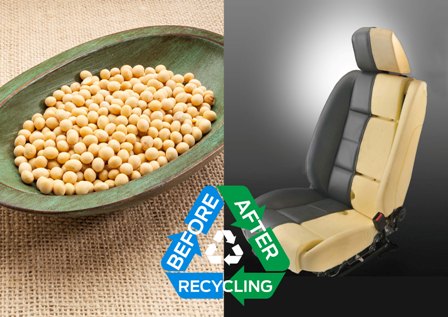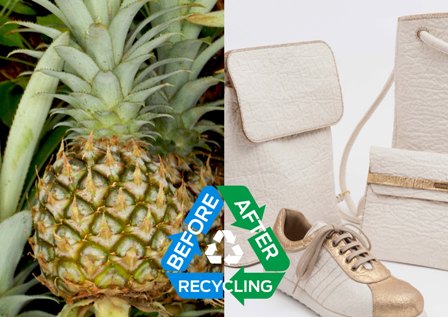From an early age, it was drilled into all of us that recycling is good for the environment. Who hasn’t been through a newspaper drive, collected used cans or set aside water bottles? To celebrate Global Recycling Day on 18 March 2018, Ford Motor Company sheds light on some of the surprising materials that make their way into the manufacture of cars and other products.
 Recycling materials have significant benefits, and items with recycled components can be lighter, which further reduces their environmental footprint.
Recycling materials have significant benefits, and items with recycled components can be lighter, which further reduces their environmental footprint.
Soybeans
Soybeans have so many uses, including in transportation. Leftover soybeans are squeezed, pulped and transformed into foam for seat cushions and seat backs. Ford introduced this innovation in 2007, and there are now 15 million vehicles on the road using its soy-based foam in its seats. The use of soy foam decreases the dependence on petroleum, and therefore reduces CO² emissions.
Wine Corks
Cork comes from the bark of cork oak trees, the majority of which are grown in Portugal and Spain, and it takes nine years to gather a harvest. From Europe, cork material finds its way all over the world, mostly to produce stoppers for wine and champagne bottles, and by recycling them, the useful life of the cork is extended. The material is diverted from landfill and can be used to manufacture a range of everyday products, from floor tiles, to building insulation and even automotive gaskets. So, the next time you pop open on a bottle… the cork’s journey carries on when you dispose of it in the recycling bin.
Chewed Gum

Yes, you read that right: gum that’s already been chewed can be re-purposed. A UK company called Gumdrop has set up drop bins in cities like London and in venues such as Legoland theme parks, to collect discarded chewing gum. Old gum is recycled into mouldable plastic and re-used on lunch boxes and footwear. Even the Gumdrop bin to collect used gum is made from gum waste.
Pantyhose
Pantyhose and tights are made from synthetic nylon blends, so it takes a long time (around 30 years) for them to decompose once they end up in landfill. So instead of discarding hosiery you don’t plan to use anymore, you can send them to recycling companies like No Nonsense, or your local recycling centre. Recycled nylon is used for clothing, vehicle insulation, playground material and a host of other things.
Tequila
Technically it’s the agave plant, from which tequila is derived, that can be repurposed as bioplastic material. The agave ‘heart’ (it looks like a super-sized pineapple) is roasted and pressed to extract the juices that will be distilled into tequila, and then the discarded fibre is mixed with plastic, which results in a composite material. Ford recently teamed up with tequila brand Jose Cuervo® to produce vehicle components made with the agave composite. “There are about 400 pounds of plastic on a typical car,” says Debbie Mielewski, technical leader for Ford’s Materials Research & Advanced Engineering Department, based in Dearborn, Michigan, USA. “Our job is to find the right place for a green composite like this to help our impact on the planet. It is work that I’m really proud of, and it could have broad impact across numerous industries.”
Pineapple Leaves
When Spanish designer Carmen Hijosa visited the Philippines and was introduced to its traditional apparel made with pineapple fibre, she took upon researching and developing a process that would turn the discarded, post-harvest plant leaves of the pineapple into a natural and sustainable fashion material. The result is Piñatex, a non-woven textile that is a great alternative to animal leather, and is used as material for bags, footwear and fashion accessories.
Recycled materials like these are of equal or better quality than the virgin materials they replace – and offer a host of environmental advantages, including diverting waste to landfill, reducing the depletion of natural resources, lowering energy consumption and cutting costs. Something to keep in mind next time you’re comparing products!




